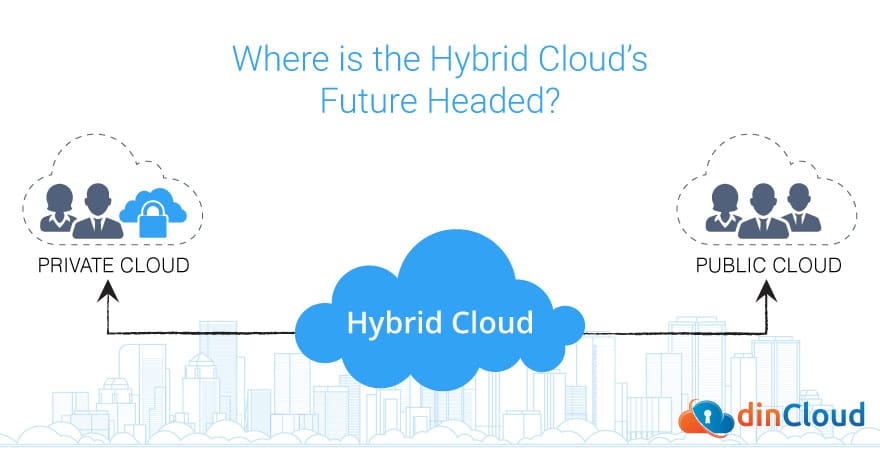Cloud Computing is a vast domain in itself. The manner in which cloud technologies such as Desktop as a Service (DaaS) have proved invaluable during the pandemic, it does not come as a surprise to say that the future lies in the Cloud.

Having said that, when you delve deeper into the various cloud deployment models, you will find that you have a lot of options out there. Each one of these options carries its own unique set of pros and cons.
While we are at it, this post will try to cover some specific aspects of the hybrid cloud model. We will also go a step farther and touch upon how the hybrid cloud seems to be shaping up in the near future.
Related: Top 8 Hybrid Cloud Computing Expectations for 2021
Hybrid Cloud – The Common Perception
As a starting point, lets first discuss the common perception that is prevalent about the hybrid cloud as of today. Well, in the plainest words, the hybrid cloud is a model in which you run some workloads over in-house data centers, while others on the public cloud.
Although this may have been a broadly correct definition of the hybrid cloud a little while ago, this cloud computing model is headed towards a major re-factoring. So, how can you define the hybrid cloud in the most up to date terms, lets try to answer this question.
The Present Shape of the Hybrid Cloud
When you view the hybrid cloud in its latest form, things are quite different. The needs of the modern enterprise have drastically changed over the past few months, which were mainly driven by a global and disruptive pandemic.
Now, you can better define the hybrid cloud as a model in which there is inter-operability between your on-premise data centers and the public cloud infrastructure. To be more specific, the modern day hybrid cloud should allow the to-and-fro movement of data etc.
Granted we are not there yet, at least as this post is being written, but this is where the Cloud is headed over the coming weeks, months and maybe even years. Some cloud analysts in general and hybrid cloud experts in particular are going even one step further.
Related: The Do’s and Don’ts of a Hybrid Cloud Deployment
Ultimate Destination of the Hybrid Cloud
The eventual evolution of the hybrid cloud, at least in the short to mid term, is that you should even be able to run selective parts of an application or software in the public cloud, while the rest remain within your own data centers.
Such an envisioned future of the hybrid cloud extends to data, applications and enterprise grade software as well. This anticipated future of the hybrid cloud will deliver an unprecedented level of flexibility and agility to enterprises.
Related: 10 Factors to Consider Before Migrating to the Hybrid Cloud
Management and Integration Challenges
The above envisioned hybrid cloud landscape carries more than its fair share of integration as well as management challenges. A typical hybrid cloud where data and apps are distinctly segregated, their management function is also de-centralized.
However, the Hybrid Cloud of the future is aiming to centralize the management and integration functions as well. This will not only result in ease of management, but also go a long way in improving the all-important end user experience.
Related: Why Hybrid and Multi Cloud Deployments are Inevitable?
Conclusion
The above vision for the Hybrid Cloud may still be a bit far from reality, but one thing is for sure though, this is where the future of the Cloud seems to be headed. You can contact dinCloud for more information on our best in class Cloud Solutions.


